How To Draw Anime City
Japanese anime and manga are very popular in both Japan and in the West. When you think about these manga drawings, you tend to think about how they often have large heads and massive eyes. While you may have the term "anime" in a box, it is in fact a very versatile art form. Manga or anime characters are full of expression – cute and adorable, crazy, funny or serious. You can learn to draw manga with this fantastic manga tutorial. You will learn how to draw anime characters step by step using a graphics tablet. Our manga drawing tutorial is full of helpful illustrations too, so you will have this fun art style down in no time!
Table of Content
- 1 Understanding the Manga Art Style
- 2 Materials You Will Need to Draw Manga
- 2.1 Best Drawing Software
- 2.2 Best Graphics Tablet for Drawing
- 3 The Basics of How to Draw Manga
- 3.1 Manga Drawing Style
- 3.2 Early Stages: Rough Manga Sketching
- 3.3 Detailing Characteristics: Working Out Your Anime Sketch
- 3.4 Background and Foreground: Creating a Mood and Atmosphere
- 3.5 Corrections and Final Touches
- 3.6 Depth of Field
- 4 Frequently Asked Questions
- 4.1 How Do You Draw Anime Eyes?
- 4.2 How Do You Draw Anime Hair?
Understanding the Manga Art Style
Have a look online at different anime and manga animations to get a really good idea of what you are in for. You will notice the eyes immediately, but remember, you have full control of your character's eye size! You will notice the style used in our example images is quite childlike – the characters all have the typical manga style elements, such as large heads, little noses, and massive eyes!
Remember, when using a computer program to draw, first make sure that you are familiar with it. Using a graphics tablet has so many fantastic advantages, especially for manga drawing! So, without further ado, let us learn how to draw manga!
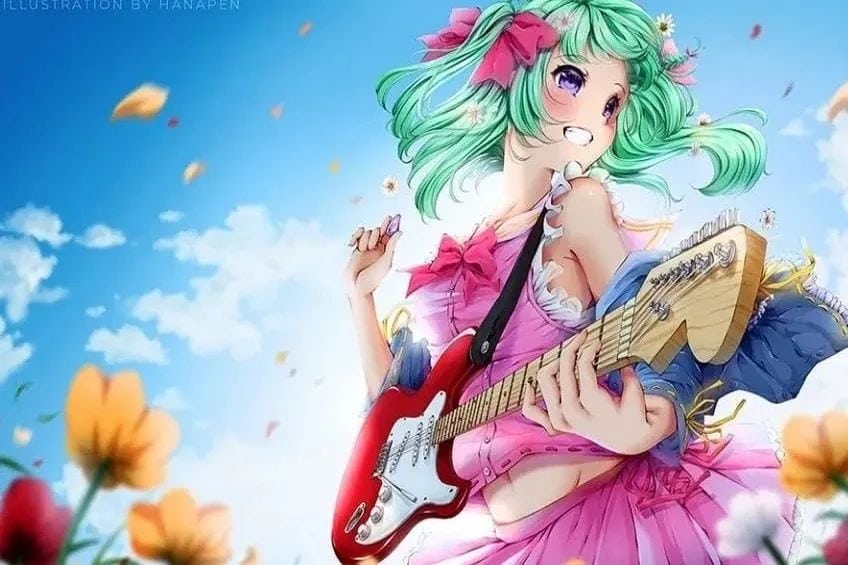
Materials You Will Need to Draw Manga
Obviously, choosing to do your drawings on a digital platform is not the most affordable, especially in the beginning. That said, once you have made the initial purchase of a graphics tablet and the appropriate software, you will not need any other tools! In particular, there will be no purchasing of costly art supplies! You will also have the awesome advantage of being able to correct any silly errors or mistakes much more easily than if you were using a pen and paper.
Of course, using a drawing tablet takes practice, just like regular drawing does! So be patient and keep practicing.
Best Drawing Software

- Everything professional artists need to create manga comic art
- Easy to use, intuitive interface produces fast results
- Screen tones add dimension, depth, and character to your art
View on Amazon

- Create original sketches using your mouse or with a pen tablet
- An all-in-one illustration, painting, manga, and comic creation solution
- Use an assortment of powerful art tools for illustrations and more
View on Amazon
Best Graphics Tablet for Drawing

- Battery-free pen charges off the screen while you create
- See your creations in vibrant color on the cinq's HD display
- Amazing precision for the most natural drawing experience
View on Amazon
The Basics of How to Draw Manga
You are here to learn how to draw anime characters, and as mentioned before, there are a few different manga styles you can choose from. There are also various techniques. Here, we will cover all the basics while using a graphics tablet for our manga drawing tutorial. You should learn everything quite quickly and relatively easily!
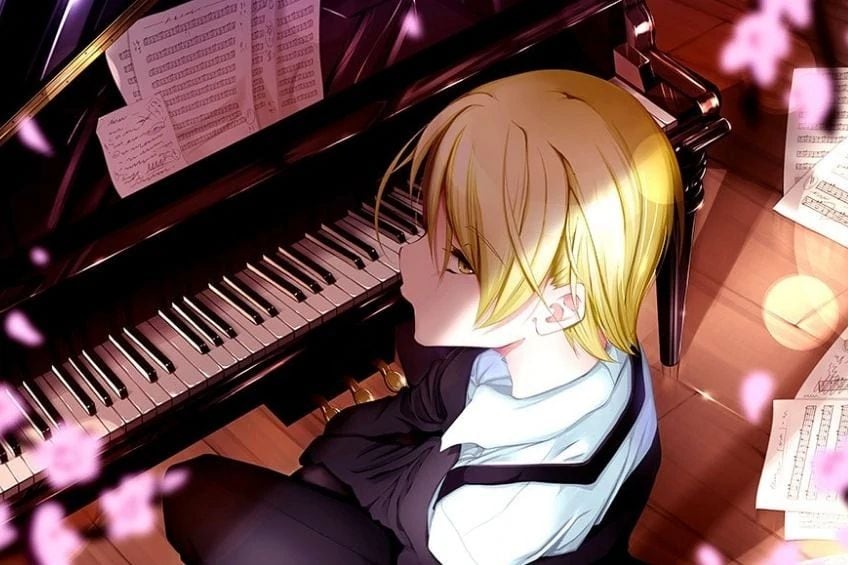
Manga Drawing Style
The majority of manga characters represent humans, and there is really only one actual anime style. When you learn to draw manga, you will notice that, aside from a few variables, this art form embodies the basics of realistic artwork and drawing. Other than the larger-than-average heads and eyes, the rest of the anime characters' body proportions all make sense, and light and shadow have the same effect as other art. With anime, background artwork is also very realistic most of the time. In fact, it is quite beautiful, as is anime-style food!
Early Stages: Rough Manga Sketching
Alright! Let us get going with our manga tutorial! We will be doing a digital drawing of Shiro, the cat girl. Of course, we are not using paper, so the first thing we have to do is create a rough sketch of our manga drawing.
This sketch will allow for proper planning of proportions, getting a good perspective, and the achieving the right composition for your anime character's figure.
The head is the first part we will start with, and is probably the most important part of your anime figure! To begin, draw a basic circle with a chin attached to the lower part. This forms the shape of your character's head. By drawing your horizontal and vertical axes, you can easily determine which way your anime character is facing. All that this takes is two simple lines (see image 2).

The next step is where you will decide the eye's position as well as the eye's angles. All you do is draw two simple circles (see image 3)above the horizontal axis. The eyes are always a big focal point in any anime character! Often, they are larger than they should be, particularly when drawing females. The small-sized mouth comes next, as well as a little nose. They are kept small to help the face appear to be more delicate. More often than not, the nose is merely indicated towards as opposed to appearing as a proper facial feature.
Once the rough sketch of your head is done, you can start on the body. The body, once again, is smaller than it would usually be, especially in comparison to the large head. The body is first drawn without any clothes on, using a series of shapes like cylinders and circles, to begin with. You will also need to choose a direction for the body to be turned, using an axis as you did with the face. You can also begin to draw clothing and hair on your anime figure.

Do not forget the basic rules of anatomy! Just because you are drawing a "cartoon" does not mean the arms and such should be disproportionate. Anime is usually quite on point with this and follows most anatomical conventions.
Detailing Characteristics: Working Out Your Anime Sketch
When you feel that your anime figure has a good pose and perspective, you can begin adding more details and fleshing out the drawing. The beauty of digital art is that you are able to reduce the opacity of the sketch lines, and you can also duplicate your rough sketch in other colors to help you distinguish the lines properly.
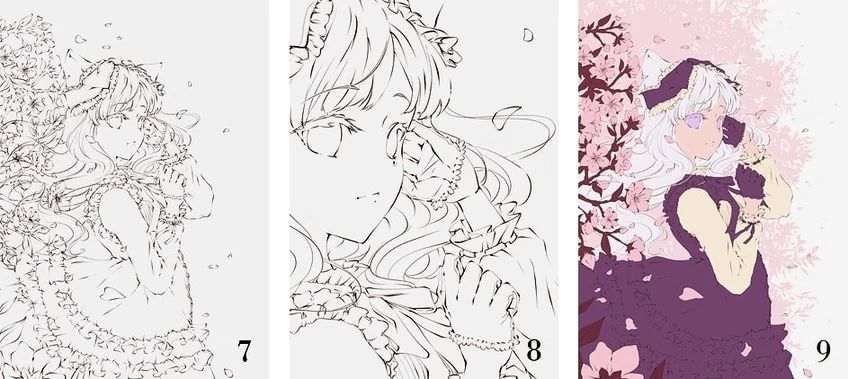
You will also need to rework sections of the face, such as the eyes. Take each step slowly, especially while learning how to draw anime hair and how to draw anime eyes. Do not forget the reflection of light inside your character's eyes, especially if you want it to have a real, classic anime look about it!
Background and Foreground: Creating a Mood and Atmosphere
At this point, if you are creating a background and/or foreground, you can begin sketching some elements. Because you are working digitally, you will do this on a separate layer. To help create shadow and light relations, work with your background. Create a layer above your rough sketch while in multiply mode.
Now, you can choose where your shadows fall in a color that is lighter than that of your sketch. You can add a soft light mode layer with some white, which will bring in light. You can now plan your drawing a little bit better, as your sketch will still be visible. While learning to draw manga, the perfect background and the right atmosphere is as important as the character itself!
A helpful tip is to keep order by using folders within your layers tab. This will help you to identify individal layers quickly when you need to make an edit or adjustment.
Anime Line Art
Your anime figure should now be taking shape! Once your character has been well prepared, you will start to clean it up with line art contours. Your sketch will be much wilder-looking, so just go over the most important lines. The result will be a far cleaner drawing.

A useful tip here is to use strokes in varying lengths, which will help to liven up your linework.
What this means is that you should use lines of varying thicknesses to create more nuance in your artwork. Using omissions can also look really good, especially later on when they start to complement the colored-in areas.
Base Coloration
After the line art, you will begin the coloration of your base. When you start with this step, you should first choose the colors for your character. Using a few different "selection" tools as well as the function for "fill bucket", you can start to color in-between your lines with a wide range of vibrant colors!
A handy tip for this section is that when you are using and working with lighter colors, you should add a layer with a dark color under it – this will help you to see if you have filled in the line art properly.
The base of your picture is now ready to work as a primed foundation for the rest of your coloration. The subsequent colors you use will all be based on the color of this foundation. It can be helpful to apply each color as an individual layer, as this will benefit you when it comes to shading.
Depth and Shadow Coloration
As you can see, our example image still has a rather flat, two-dimensional appearance. Shading will help to fix this! This is a very important and essential stage of anime drawing. A useful tip for shading is to be aware of light strength, as well as the light's angle and direction. Think about what sort of light it is – natural, cold, warm, or artificial light – each will create a slightly different shadow.
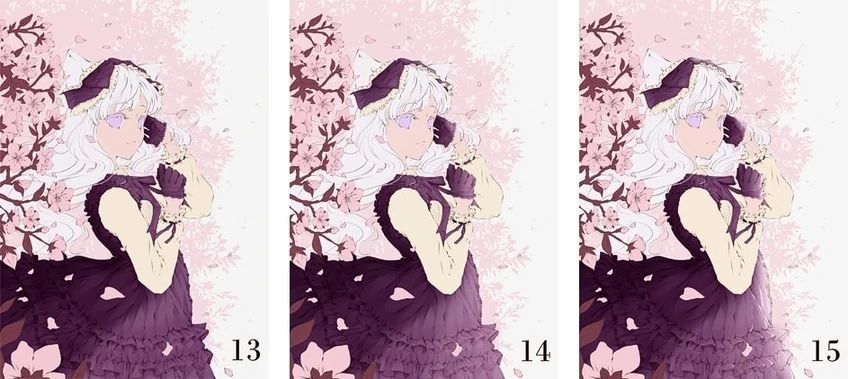
When shading, try to create either a clipped layer or clipping mask over the layer of the respective coloring area. Using a darker color, you will now be able to draw shadows without having to worry about coloring over unwanted areas. If you look at the dress in the above image, you will be able to see how the shadow varies, getting darker and darker at each level. You can use this same method to shade your background.
Light Coloration
With darkness and shading must come light, and the addition of highlights will create a more striking effect. You will need additional layers for your light reflections, which can be created by using white or simply a light color, depending on the strength of your desired light. Eyes look especially great once light reflections have been added and highlighted.

If you want to achieve vivid color, you may find it helpful to add color reflections as well. Do not overdo it, though, or soon it will just look like spots of color!
Softening the Lines
You may feel that drawing your line art in black is too harsh and hard. You can soften it up a bit by giving it a little color. Using a simple brown tone is often best, but you should be objective and adaptive when choosing the right tone and shade for this, bearing in mind the enclosed color and of course, light.
Placing your Figure Correctly
Does your anime character appear to be randomly floating over the beautiful background you created? Add more shadow to help it blend into its environment a little better. Remember to set the layer to multiply mode. Now your figure will look less awkward and more as though it belongs! You can also do this with other elements within your image too.
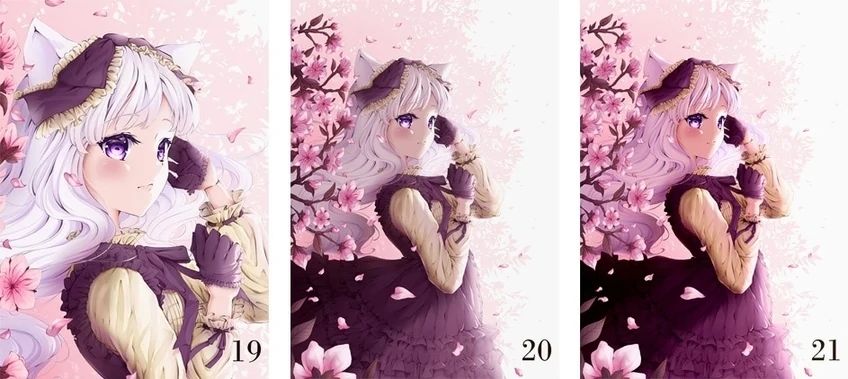
Corrections and Final Touches
Have you made an error? Do the colors appear grey, or perhaps the image is lacking in color direction? You can now fix up any issues and correct them. By using correction layers, you will be able to give your entire image the perfect mood.
Depth of Field
Depth of field is important! Give your anime figure more of this to help it look more natural overall. Using a blur filter over some elements of both the background and foreground will help with this tremendously. You can also try adjusting the filter strength according to how close or far the blurred objects are.
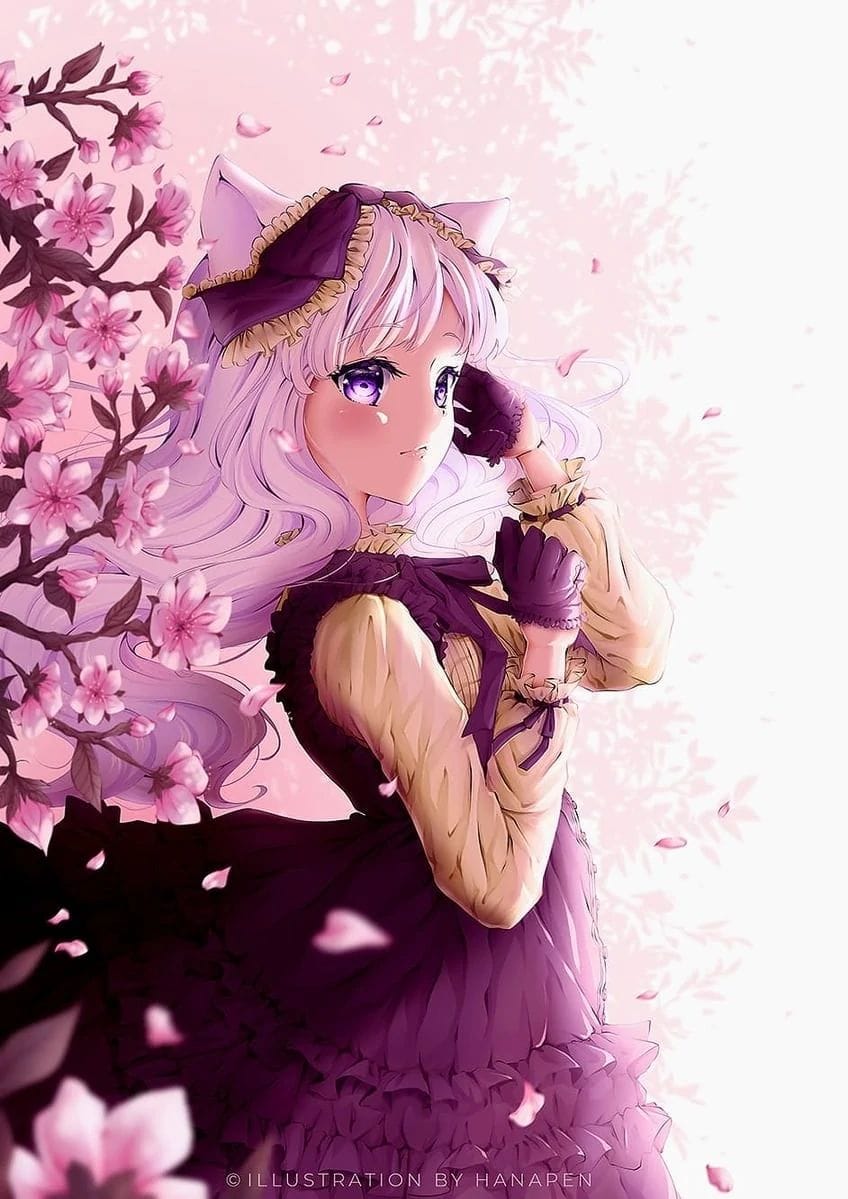
Frequently Asked Questions
How Do You Draw Anime Eyes?
To learn how to draw anime eyes, you must remember that they are usually bigger and oversized. They are also filled with much detail. We suggest adding some light reflection if you want your eyes to be more alive in appearance. You can draw your eyes in absolutely any color you want to – even purple!
How Do You Draw Anime Hair?
When you learn how to draw anime hair, you will begin by creating the basic outline and shape of your desired hairstyle. After this, you will start adding some layers to create more realistic hair. Just like the eyes, anime hair can be any color at all! But, do not forget to add elements of shadow and light, as shading is always needed when you draw hair.
Well done! You have now finished your manga drawing! We hope that this manga drawing tutorial has everything you need to be well on your way to creating many more awesome anime characters! Be creative and think out of the box, and most importantly, have fun!

Hanna Kirchner | «Hanapen»
From a very young age, Hanna Kirchner has loved to draw, where she would always be found in the art corner of her Kindergarten class. Since, she has graduated as a graphic designer. Hanna resides in the Karlsruhe area of Baden-Württemberg. Also from a very young age, Hanna enjoyed watching anime shows on TV. Among her childhood favorites were Yugi-Oh, Beyblade, and of course, the ever-popularPokémon! Hanna's love for the Japanese art form was certainly encouraged by her older sister, who also adored manga. She recalls seeing one of her sister's German manga magazines, Daisuki, and knowing exactly what she wanted to do as a career. Now, Hanna is an accomplished graphic designer who still enjoys drawing anime part-time.
https://www.instagram.com/hanapen
www.twitter.com/Hanapen5
www.youtube.com/Hanapen
https://www.deviantart.com/hanapen
How To Draw Anime City
Source: https://artincontext.org/how-to-draw-manga/
Posted by: charettebegather1962.blogspot.com

0 Response to "How To Draw Anime City"
Post a Comment